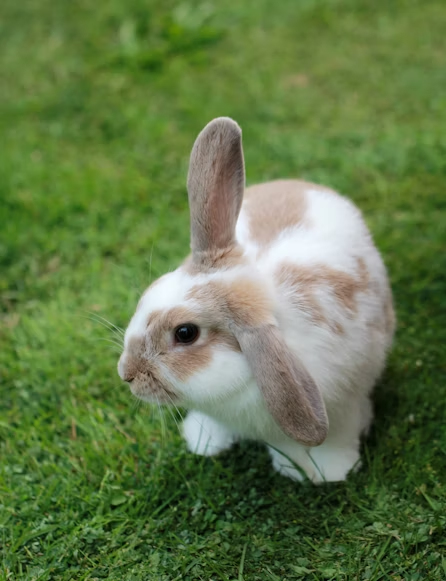Rabbit farming is a growing agricultural enterprise in Kenya, offering income opportunities and a source of lean meat. However, disease outbreaks can significantly reduce productivity and profitability. Effective disease prevention is crucial for maintaining healthy rabbits, optimizing growth rates, and ensuring sustainable production. This guide outlines best practices tailored for disease prevention in Kenyan rabbit farms.
Understanding Common Rabbit Diseases in Kenya
Before implementing prevention measures, farmers must first understand the common diseases affecting rabbits in Kenya. Awareness enables early detection, timely treatment, and effective control. The most common rabbit diseases include:
– Coccidiosis: A parasitic infection that affects the intestines and liver. It causes diarrhea, weight loss, and poor growth.
– Pasteurellosis (Snuffles): A bacterial respiratory infection characterized by nasal discharge, sneezing, and breathing difficulties.
– Mites and Mange: Caused by external parasites, leading to skin irritation, scabs, and fur loss.
– Myxomatosis: A viral disease causing swelling around the eyes, mouth, and genitals, often leading to death.
– Rabbit Hemorrhagic Disease (RHD): A highly contagious and fatal viral disease affecting the liver and causing internal bleeding.
– Enteritis: Inflammation of the intestines, often linked to poor feeding or bacterial infections, leading to diarrhea and dehydration.
Recognizing the symptoms of these diseases early allows farmers to take action before the infection spreads across the herd.
Quarantine New and Sick Rabbits
One of the most effective ways to prevent disease introduction is through quarantine. Always isolate newly purchased or returning rabbits for 2 to 4 weeks before introducing them to the main population. Observe them for signs of illness such as sneezing, diarrhea, or unusual behavior. If any symptoms appear, seek veterinary advice immediately. Similarly, any rabbit that falls ill should be separated from the herd until fully recovered to avoid cross-contamination.
Maintain Clean Housing and Environment
A clean and comfortable environment is key to preventing diseases. Regular cleaning reduces the presence of pathogens that thrive in dirty and damp conditions. Farmers should:
– Clean hutches, cages, and feeding equipment daily.
– Remove soiled bedding, leftover food, and manure promptly.
– Disinfect housing weekly using mild disinfectants such as diluted bleach or iodine solutions.
– Ensure good airflow and ventilation to prevent respiratory illnesses.
– Avoid overcrowding to reduce stress and disease transmission.
Good housing design—with raised floors and proper drainage—helps maintain a dry and sanitary environment, discouraging bacteria and parasites.
Implement Biosecurity Measures
Biosecurity involves protecting the farm from external disease sources. Key measures include:
– Limiting entry to authorized personnel only.
– Wearing protective clothing and footwear specific to the rabbit unit.
– Disinfecting hands, tools, and equipment before and after use.
– Avoiding movement between multiple farms to reduce disease transfer.
– Ensuring that visitors and suppliers follow hygiene protocols.
Biosecurity may seem simple, but it’s one of the most effective and affordable disease prevention strategies.
Provide Balanced Nutrition and Clean Water
Good nutrition strengthens immunity and improves the rabbits’ ability to resist infections. Farmers should feed a balanced diet containing adequate protein, vitamins, and minerals. Green forages such as Napier grass, desmodium, and lucerne can be supplemented with commercial pellets. Ensure constant access to clean, fresh water. Avoid moldy or spoiled feed, and do not introduce new diets abruptly as it may cause digestive disorders like enteritis.
Regular Health Monitoring and Veterinary Care
Daily observation helps detect early signs of illness before it spreads. Healthy rabbits are alert, active, and have smooth fur and clear eyes. Warning signs include drooling, diarrhea, nasal discharge, reduced appetite, or isolation from the group. Farmers should:
– Schedule regular veterinary checkups.
– Vaccinate against common diseases like RHD and Myxomatosis, if vaccines are available.
– Deworm and treat for external parasites every few months using approved veterinary drugs.
– Record all treatments and vaccinations for proper tracking.
Establishing a relationship with a qualified veterinarian ensures quick response to disease outbreaks and access to professional advice.
Proper Handling and Stress Reduction
Stress weakens the immune system, making rabbits more vulnerable to diseases. Handle rabbits gently to avoid injuries and stress-related illnesses. Avoid mixing aggressive animals with calm ones, and provide adequate space and quiet areas. Protect the rabbits from loud noises, predators, and extreme temperatures. Reduce unnecessary movement or handling, especially during breeding or after weaning.
Record Keeping and Disease Traceability
Keeping accurate records is crucial for managing rabbit health. Farmers should document the following details:
– Birth dates and breeding history.
– Vaccination and deworming schedules.
– Feed changes and disease incidents.
– Treatment details and outcomes.
These records help trace the cause of any health problem and improve farm management over time.
Waste and Carcass Management
Improper disposal of waste and carcasses can spread diseases. To prevent contamination:
– Remove manure daily and store it away from rabbit housing.
– Compost manure thoroughly before using it as fertilizer to kill pathogens.
– Dispose of dead animals through deep burial or incineration.
– Disinfect the area where the carcass was found to eliminate residual germs.
Proper waste management not only prevents disease but also improves farm hygiene and odor control.
Educate and Train Farm Workers
Farm workers play a vital role in maintaining rabbit health. Continuous training on disease identification, handling, and hygiene practices ensures that everyone understands the importance of prevention. Organize periodic workshops or consultations with veterinary officers to stay updated on new disease management techniques. Encouraging teamwork and communication helps maintain high standards of health and safety on the farm.
Summary
Rabbit disease prevention in Kenya relies on proactive measures rather than treatment. Clean housing, proper nutrition, biosecurity, and routine health checks are the foundation of a healthy rabbitry. Farmers should combine good management with professional veterinary support to safeguard their investments. By adopting these best practices, rabbit farmers can reduce losses, improve productivity, and ensure long-term sustainability.

